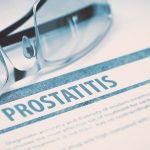Anal Fissure Disease: Treatment via the Cranford Technique
Steven G. Cranford, ND
An anal fissure is a linear ulcer usually extending from just below the anorectal line to the margin of the anus. The pain associated with fissure disease is disproportionate to the size of the lesion, with postdefecatory pain (intense burning) lasting anywhere from minutes to hours. Location is usually in the posterior midline (90%), which according to Schouten may be explained by relative ischemia in that area because of sphincter spasm or increased resting pressure of the surrounding sphincteric musculature (internal or external). Anterior fissures are more common in women than in men, accounting for 10% of all fissures in the former, while accounting for only 1% in the latter. Lateral fissure disease, which may or may not be painful, may be suggestive of serious local or systemic pathology (human immunodeficiency virus, Crohn disease, ulcerative colitis, tuberculosis, syphilis, leukemia, or anal carcinoma).
Certain pathology is consistent with fissure disease, and chronicity usually dictates its extent. It is common to see hypertrophied anal papilla (can be multiple), sentinel pile of Brodie (consists of fibrous inflamed tissue at the base of the ulcer), internal sphincter spasm (may lead to anal stenosis and develop an “overshoot” or increased resting potential of the surrounding musculature), and small amounts of suppuration (Figure). The etiology of fissure disease is usually passage of a large stool or prolonged straining over a period (chronic constipation). Patients with a fiber-depleted diet may be more susceptible to this condition. The typical symptoms for anal fissure disease include postdefecatory pain, frank bleeding, sentinel pile, constipation or obstipation, and even dysuria. The patient must be examined with care, as there will be predictable apprehension because of pain. It is important to use topical anesthetics (lidocaine, 5%) before such examination, and in some cases perianal infiltration (posterior midline) of 1 to 2 mL of bupivacaine hydrochloride may be required. Digital examination will quickly allow the physician to determine the extent of sphincter spasm or anal stenosis, which along with the other clinical findings, is vital to dictatrecommending an appropriate treatment protocol.
Treatment of acute or subacute anal fissure disease is dictated by signs, symptoms, and clinical findings. Absence of associated pathology (hypertrophied anal papilla, sentinel pile, and anal stenosis) allows the clinician to prescribe conservative nonsurgical treatment. If surrounding pathology is present, especially anal stenosis, the only solution may be outpatient surgery (anal dilation and fissurectomy or fissurotomy [the “Cranford technique”]).
Treatment Plan for Anal Fissure Disease
The treatment plan for anal fissure disease at the Sandy Blvd. Rectal Clinic–Portland, Oregon, is trifold. The 3 levels are as follows:
Level 1
Level 1 treatment involves appropriate dietary changes, which usually consist of excluding dairy products, coffee, alcohol, hot spicy foods, chocolate, tomatoes, strawberries, and citrus fruits or juices and using stool softeners, topical anti-inflammatory cream or ointments (corticosteroids), and topical lidocaine, 5%, ointment and suppositories.
Level 2
Level 2 treatment is the same as level 1 treatment but includes nitroglycerin (glyceryl trinitrate ointment, 0.2%) applied to the perianus TID or diltiazem, 2%, gel applied TID. I prefer diltiazem, as the nitroglycerin can cause severe headache.
Level 3
Level 3 treatment comprises the Cranford technique. This procedure consists of anal dilation (manual), fissurotomy or fissurectomy (surgical excision of the diseased ulcerated tissue), and surgical excision or fulguration of the sentinel pile and/or all hypertrophied anal papilla. The patient then follows up 3 to 4 days after surgery with perianal applications of diltiazem, 2%, gel TID for 30 days; topical anesthetics; and a suitable stool softener.
The advantage of the Cranford technique is that it maintains the integrity of the internal sphincter muscle. I sometimes joke with my patients that I am a “sphincter saver,” as the medical management of acute anal fissure disease is a lateral internal sphincterotomy. The internal sphincter muscle is resected in its entirety, reducing the resting potential of the muscle and allowing increased vascularity to the diseased tissue, which facilitates healing. The obvious adverse effect from this procedure is a condition called wet anus syndrome, or anal leakage. This is an annoying condition, which could and should be avoided. I have performed 1200 to 1500 outpatient “fissure repairs” under local anesthesia at the Sandy Blvd. Rectal Clinic–Portland.
The Cranford Technique
The steps of the Cranford technique are as follows:
- Before performing the Cranford technique, I discuss with the patient the procedure, alternatives, risks, and any questions.
- I may prescribe diazepam (5 mg), hydrocodone (½ tablet), or tramadol hydrochloride (50 mg) to decrease the patient’s anxiety.
- The patient is placed in a modified left lateral Sims position.
- Suitable topical disinfectant is applied to the perianal tissue along with a topical anesthetic (lidocaine, 5%, or tetracaine, 2%). I recommend slow massaging of the anesthetic into the anus/ and perianal skin to help achieve some degree of anesthesia.
- With a diabetic syringe, I then inject bupivacaine (0.5 mL) into the anal verge of all 4 quadrants. This helps create a “wheel” (pocket of anesthesia) to allow less painful injection of further anesthetics. I have found that diabetic syringes are far less painful than the typical 26- or 30-gauge needles. Using a 5-mL syringe with a 30-gauge needle, I then continue to inject bupivacaine (about 15-20 mL), which provides excellent long-term anesthesia (60-600 minutes). It is important to avoid using anesthetic with epinephrine because during anorectal surgery you always want to see bleeders, which can then be sutured or fulgurated.
- I then digitally dilate the anal canal. I insert 1, 2, and then 3 fingers and slowly go back and forth (pronate and supinate) with the intention of stretching the anal canal and its surrounding musculature. If this is attempted too quickly, muscle may be avulsed or torn instead of stretched. After completion of anal dilation, check to see if the canal is adequately dilated by inserting a Young 3 or 4 dilator.
- The surgery consists of the use of high-frequency surgical diathermy. The tip of the instruments “blends” tissue to open up the fissure and extend it approximately 1 to 2 cm. Any overhanging edges of the wound must then be surgically removed, being careful to cauterize any bleeding. The resultant wound is usually 1 cm in width and 2 cm in length. The wound is left open and is subsequently packed with sterile gauze to allow for proper drainage.
- I then check for any hypertrophied anal papilla and fulgurate with surgical diathermy (spark setting), or if large, I surgically extirpate and fulgurate the base. When treating fissure disease, one must remove or fulgurate all hypertrophied anal papilla, or the outcome may be compromised.
- Postoperative follow-up consists of ice applied directly to the anus, topical disinfectants, topical anesthetics, suitable pain medications (hydrocodone or oxycodone), and sometimes low-dose (prophylactic) antibiotics (cephalexin, 250 mg 1 BID for 10 days).
- After 3 to 4 days, the patient then applies to the perianus topical diltiazem, 2%, gel TID for 30 days. This compounded medication is a calcium channel blocker that helps to relax the internal sphincter muscle, improving blood flow to the area and resulting in healing. Appropriate stool softeners (psyllium or flaxseed) are also prescribed.
I hope this information will be helpful to the clinician. It is important to know that there is an alternative to the typical lateral internal sphincterotomy and its attendant probability of some loss of proper anal sphincter function (wet anus syndrome). I have been performing this procedure for almost 35 years at the Sandy Blvd. Rectal Clinic–Portland, and I want to thank my teachers and mentors, the late Maurice Beal, DC, DO, and Jay Oliver, DC, ND, for their guidance and professionalism during my years with them (1975-1982).
 Steven G. Cranford, DC, ND is a graduate of Western States Chiropractic College and National College of Naturopathic Medicine. He is currently in practice at the Sandy Blvd. Rectal Clinic-Portland in Portland, Oregon where he has been practicing for over 35 years. He was trained by the found-ers of this clinic Dr. Jay Oliver DC, ND and Maurice G. Beal DC, DO who both practiced proctology for over 45 years. Dr. Cranford’s interest includes fly-fishing, bil-liards, older Porsches, the Oregon Coast, and his four adult children. If you would like more information about his practice and colo-rectal products, visit his website at www.sandyclinic.com or phone toll free at 1-888-750-1432. Dr. Cranford is happy to answer any e-mails about referrals or patients with symptoms related to hemorrhoids, anal fissures, perianal abscess, condy-loma (HPV), skin tags, constipation, Crohn’s disease, IBS, ulcerative colitis, or any other condition related to the practice of proctology.
Steven G. Cranford, DC, ND is a graduate of Western States Chiropractic College and National College of Naturopathic Medicine. He is currently in practice at the Sandy Blvd. Rectal Clinic-Portland in Portland, Oregon where he has been practicing for over 35 years. He was trained by the found-ers of this clinic Dr. Jay Oliver DC, ND and Maurice G. Beal DC, DO who both practiced proctology for over 45 years. Dr. Cranford’s interest includes fly-fishing, bil-liards, older Porsches, the Oregon Coast, and his four adult children. If you would like more information about his practice and colo-rectal products, visit his website at www.sandyclinic.com or phone toll free at 1-888-750-1432. Dr. Cranford is happy to answer any e-mails about referrals or patients with symptoms related to hemorrhoids, anal fissures, perianal abscess, condy-loma (HPV), skin tags, constipation, Crohn’s disease, IBS, ulcerative colitis, or any other condition related to the practice of proctology.
Reference
- Schouten.










